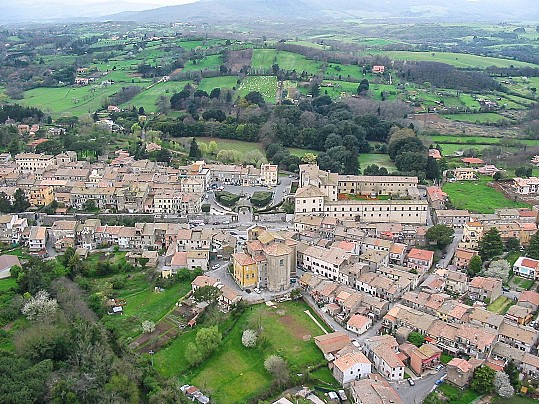“Oriolo Romano is part of the Association of Authentic Italian Villages and Virtuous Municipalities, a combination that has allowed for a successful meeting of tradition and innovation. It is precisely in this sign that joining the Piazza Wifi Italia project represents an opportunity for an administration like ours that is always careful to provide new services to citizens
Oriolo Romano is located in the province of Viterbo, on the hills of the Sabatini Mountains, in a hilly area rich in woods and not far from Lake Bracciano, a nature reserve since 1999. The village has been able to develop harmoniously with the surrounding environment, a characteristic that emerges in particular in the reference to nature present in the “Olmate”, the ancient gardens of Palazzo Altieri. Oriolo Romano is, in Tuscia, unique on an architectural level: the village is in fact one of the very few settlements rationally planned from the urban point of view starting from its foundation.
The first historical evidence of Oriolo can be found starting from 1560, when the Orsinis ceded the fief to the Santacroce, who started the urban development of the town with the aim of building a sort of ideal city, with a perfect master plan. The historic center of Oriolo Romano is one of the first examples of modern urban planning, a civic foundation "from scratch" in a depopulated place. It is a project that is still visible today in the characteristics of the road system, in the relationships and proportions between the stately building and the rest of the village. The Palazzo, the fulcrum of the town, belonged to the Santacroce family from 1578 to 1604 and has the typical characteristics of the 16th-17th century fortress-dwellings. Inside the building, which is part of the Lazio museum complex, the various rooms house galleries of fine workmanship paintings, stuccos and neoclassical furnishings and frescoes. Among the religious architecture of the village, we remember the Parish Church of San Giorgio, with a late Baroque layout, and the Church of Sant’Anna. Among the civil architectures worth seeing are the Fontana delle Picche, built to a design by Jacopo Barozzi da Vignola, and the Mola dei Biscione, an ancient mill built at the behest of Giorgio Santacroce. The natural areas surrounding the village are of particular importance, in particular the complex of tree-lined avenues that give rise to the Olmate and the Faggeta di Oriolo, a beech forest that belongs to the Regional Natural Park of the Bracciano - Martignano lake complex”.
